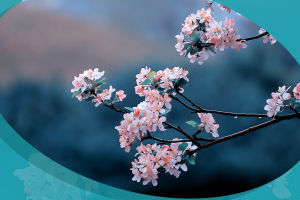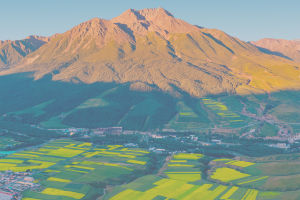In daily life, most of the mushrooms we come into contact with are relatively ordinary in shape. But the magic of nature is beyond your imagination.
There are also all kinds of mushrooms in the mushroom world that are fascinating, and any imaginable shape, color, and toxin can appear on them.
1. Aseroë Rubra
Aseroë rubra is a common Basidiomycota fungus in Australia, characterized by a carrion odor and an anemone-like appearance. Aseroë rubra is widely distributed in Australia, from southeastern Queensland through New South Wales and Victoria to Tasmania.
There are also traces of the archipelago on the other side of the Pacific Ocean. Aseroë rubra are saprophytic organisms that can grow on wood chips or mulch. Aseroë rubra seems to have traveled the world with garden or soil products. Aseroë rubra was recorded growing in soil imported from Australia in 1829 in Kew Gardens, England, and later in California, USA.
2. Hydnellum pecki
Hydnellum pecki is one of the unusual members of the fungal family. This mushroom has many names, usually associated with sap or blood.
One might think that the blood-red liquid on this mushroom is blood splattered by forest animals on the white caps. Hydnellum pecki can be found in North America. In addition, Hydnellum pecki also exist in Europe, and they were recently found in Korea.
3. Clathrus ruber
Clathrus ruber is a fungus belonging to the Phalloidaceae family and is the type species of the genus Clathrus. It is often referred to as the red cage due to its fruiting body shaped like a hollow sphere surrounded by lattice-like branches.
The fungus is saprophytic, feeds on decaying woody plants, and often grows singly or in groups on fallen leaves in garden soil, on grass, or on wood chips covering garden grounds.
Although considered primarily a European species, Clathrus ruber has been introduced to other regions and it is now widely distributed, including North Africa, Asia, Australia, and North and South America.
The spore-forming tissue of Clathrus ruber has a foul odor that attracts flies and other insects to help spread the spores. Although the edibility of the fungus is uncertain, its smell has made it difficult to make people want to eat it.
4. Amanita muscaria
Amanita muscaria, with an umbrella-shaped appearance, is a highly poisonous mushroom. It used to be mixed in milk to kill flies. It is a mushroom that can make people bigger when eaten in Super Mario, and it is also the prototype of the mushroom in emoji.
5. Marasmius Haematocephalus
Mushrooms like Marasmius Haematocephalus are soft and moist and belong to the Basidiomycetes class, the White mushroom family. The whole plant is as light and lovely as an open red umbrella, delicate and soft.
Their growth helps break down litter on the forest floor, and although small, plays a non-negligible role in tropical rainforests.
6. Panus fasciatus
Panus fasciatus, also called the "hairy trumpet mushroom," looks like it lives on another planet. But this fungus lives in Australian forests. Rotten wood is often their habitat. The samples appear to provide a temporary home for a tiny striped insect.
7. Chorioactis
Chorioactis is one of the rarest mushrooms in the world, also known as the "Star of Texas." This bizarre mushroom is only found in central Texas, two remote areas in Japan, and the mountains of Nara.
Chorioactis is dark brown in color and has cigar-shaped sporangia that split open into a tan star, releasing spores and a distinct whistling sound. Chorioactis is one of the few fungi known to whistle when it releases spores.


